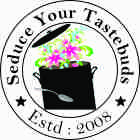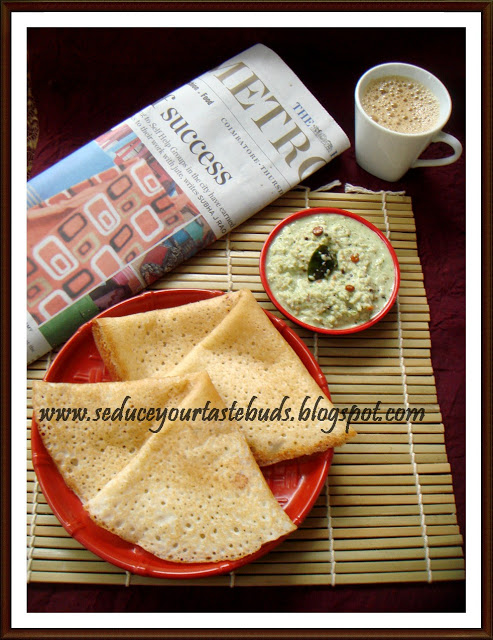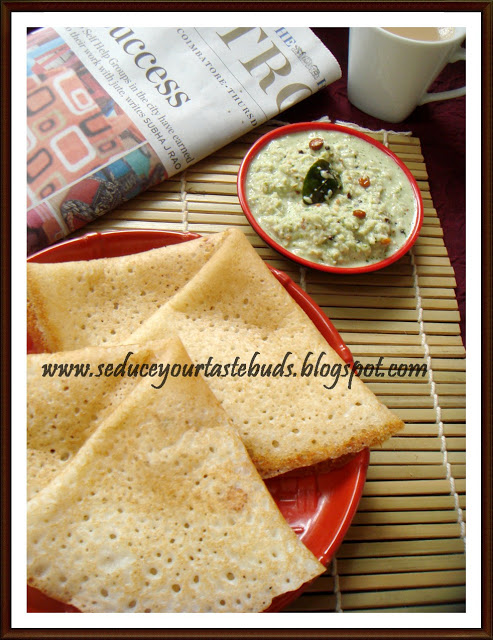Nutrition classes in college was something that I was always eager to attend. While most of my classmates found it either dull and boring or too technical to remember, I simply loved. The reason was our professor who handled the class.She used to give a whole lot of examples to explain a topic that would literally make the subject sit in your brain for ever!
Of course we had to learn a whole lot of numbers pertaining to various nutrients for a single food and for the exams we kept our fingers crossed so that we don’t mess up the numbers. I love those days and really wish I could go back to college…..
Anyways,While I had always wanted to share my favorite topics on diet and nutrition here on my blog, somehow kept postponing it. Luckily Srivalli chose ‘Feeding the sick / elderly‘ as one of the theme for this month’s blogging Marathon and I immediately signed up for it.
As you would have read the title, today’s post is on feeding the elderly or in technical terms- Geriatric nutrition.
Just as the nutritional requirements change from infancy to adulthood, the requirements of the elderly too change. Aging process brings about changes in the physiological, psychological and immunological spheres that affect the nutritional status of the elderly.
Through proper care and nutrition, the ageing process may be handles in a better way such that the individual enjoys the physical and mental vigor even at a ripe old age.
The food and nutritional status / requirements change and vary with factors like
- Heredity
- Family circumstances
- Health
- Educational status
- Cultural factors
- Economic conditions etc.
There are certain things that have to be modified in an elderly person’s diet. Here is a small list of problems that the elderly may faces and the ways in which a proper diet can help. ..
- Constipation – This is a major problem and it can be dealt with a good diet most of the times. Plenty of fluids Green leafy vegetables can be added in the meal.
- Problems with dentition fallen teeth / dentures – A visit to the dentist when ever needed is essential and an yearly check up is advised.Soft and easily chewable foods are the best when there is problem.
- Decreased production of digestive juices : To counteract this situation easily digestible foods, low in fat should be given.Similarly small frequent meals are recommended.
Apart from these problems, there is reduced sleep and it may affect the digestion. Unfamiliar foods and sudden changes in meal time also affects the digestion.
Sometimes the elderly too encounter some nutritional problems. Obesity is one of them. The calorie intake remains the same even though the need has decreased. Also the life style changes as one ages and there is less of physical activity.If obesity becomes a problem , it is best to consult a physician and take the advice from a dietitian.
As the appetite decreases, amemia is sometimes seen. It is manifested as lack of energy, feeling of tiredness,anxiety, sleeplessness etc. Often these are mistaken as the ‘symptoms’ of old age and often neglected. This is where yearly check ups come to the rescue.
Also drugs that are taken for the various ailments may also interfere with the nutrient absorption.
Before we go to today’s recipe, here are some of the Indian foods that can be given to the elderly keeping in mind all that we discussed earlier[I will be updating this post with a detailed list of recipes]
Increases the nutrient quotient – Vegetables and Dhal and green gravies / curries.
Today’s recipe is a simple breakfast dish that uses Moongdhal. Moongdhal is easy to digest and as a pulse – a good source of protein. The best part is that it needs no fermentation. The dosa batter can be used as soon as it is ground! This dosa sounds more like adai but does not make use of any other lentil other than urad dhal and moong dhal.
This recipe is from mom’s hand written recipe diary. I was searching for some book in the attic and found her recipe book . Immediately, I copied some recipes to try and this is the first one to be posted.
I used:
Raw rice – 2 cups
Moong dhal – 1 cup
Urad dhal – 1 cup
Green chillies- 4 [The dosa had no hint of spiciness!.Adjust the quatity of green chillies based on the variety and to suit your taste]
Grated coconut- a handful
Asafoetida powder – a large pinch
Salt to taste
- Soak rice and both the dhal for 8 hours or over night.
- Wash and drain the soaked water and grind this along with the other ingredients to a fine paste.
- Heat a griddle and pour a ladle full of batter in the centre and spread it to a circle.
- When the edges leave the sides, flip if over and cook for a few minutes.
- Remove from the griddle and serve hot with sambar / chutney of your choice.
Moong dhal dosa served with coconut peanut coriander chutney
Also take a look at the Blogging Marathon page for the other Blogging Marathoners doing BM#29
Post Views: 2,907




Well those were the days….college days are missed by most of us…and life moves on turning every now and then.this is a very good post PJ..have always loved your health write ups. I make the moong daal dosa without the udad daal…but this one looks good.
Very informative post PJ n love this healthy dosas 🙂
looks yummy n delicious…
College days are just too sweet to reminisce.
These dosas sound awesome!
Wat a well written and very detailed post, a page to be treasured,thanks for sharing many useful informations PJ..Moongdal dosa looks healthy as well.
Wish we could go back there !
Very informative post and dosa looks elegant .
Lovely recipe and wonderful write up PJ…
This pasiparuppu Dosai is most famous in Andhra Pradesh and everybody loves it as breakfast. But unlike in other state the pasiparuppu is used along with its green skin, which is much tastier and healthier. Mantha V Sharma, Minjur, Near Chennai – email – vsmantha@gmail.com
The "Hindu Newspaper" by the side was a real nice touch. Should we grind the rice separately and then the dals separately or all together?
Jayanthi, I soaked the dals and the rice together and ground it together with the other ingredients.
healthy and delicious dosa
Awesome
Visit at http://www.simplytadka.com/
Well explained about edit and health, love the way you presented.
Very informative post PJ. Great job. Love those dosas too.
love the post write up, PJ ! my kid (who is not a geriatric :-))) loves Dosa in most forms – I am bookmarkign ur recipe to try out very soon !
Kalyani
Sizzling Tastebuds
Join us at Magic Mingle with Kiwi & Basil
Hosting Kids Delight – Party Food event
Here you can sell and buy both new and used products.
This website is perfect for selling just about anything at all.
More at postallads4free.com